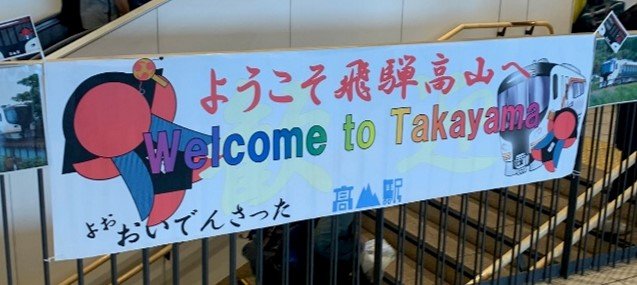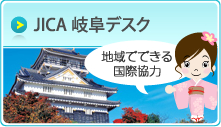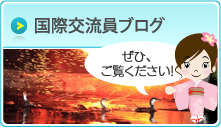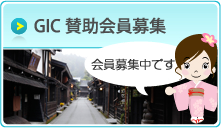 |
(2023.11.27) |
Way back in January, on this blog I discussed the beautiful town of Gujo Hachiman, a popular tourist destination here in Gifu Prefecture. In this post I want to discuss another popular Gifu tourist destination; the northern city of Takayama, located in the Hida region. I am lucky enough to have been to Takayama numerous times, as it has become one of my favourite places! I've been in late spring, mid-summer, early autumn, late winter, and at the 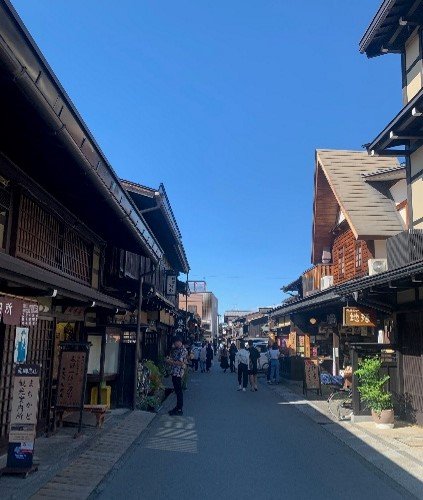 end of summer too, and I would recommend it to anyone who was planning a visit to Gifu Prefecture.
end of summer too, and I would recommend it to anyone who was planning a visit to Gifu Prefecture.
Takayama is written as 高山 in Japanese, and the name literally means high mountains! Its name is fitting, since part of the Japanese Alps area is in the large Hida region of northern Gifu Prefecture. These mountain ranges are famous, and continue into Nagano Prefecture, Toyama Prefecture and Niigata Prefecture. The city of Takayama is therefore surrounded by mountains, and if you go you may see them from the window of your hotel if you are on a higher floor, providing a beautiful backdrop to the city proper.
....
In Takayama you really are spoilt for choice when it comes to sights to see and things to do. For anyone interested in local history, as well as its place more broadly in Japanese history, my top recommendation is Takayama Jinya, not to be confused with the word "jinja" which means shrine! (I made this mistake when I went there for the first time, and thought I was walking into a shrine.) Takayama Jinya was a local government office in the Edo period (1603-1868), but it is far more unique than it seems from that simple description. For context, during the Edo period Japan was ruled by a Samurai government, called a Bakufu, or Shogunate, led by the Shogun. A Samurai clan called Tokugawa were in charge of Japan's central government, located in Edo (present-day Tokyo).
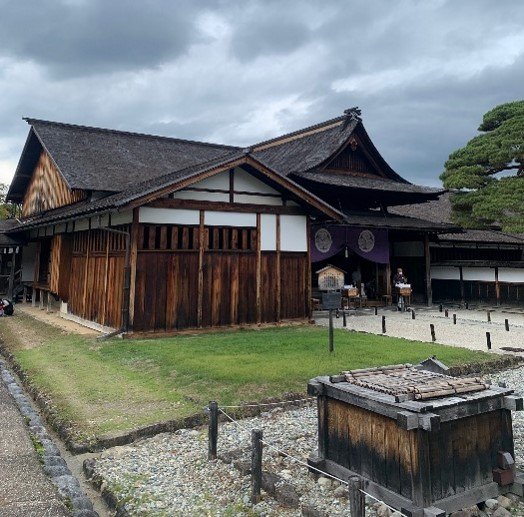
The Shogunate gave different Samurai clans control over different areas across the country, while still retaining centralised control. Each area was called a Han, with the leader of each area being a Daimyo. The Kanamori clan ruled the Takayama Domain, but only until 1692, at which time they were relocated. Hida became an area under the direct control of the Shogunate, which was rare. Supposedly, the reason that the Shogunate took direct control of Takayama is that the area was rich in resources such as timber, gold, silver and copper, and by having direct access to these resources the Shogunate could gain wealth. Other areas which were under the Shogunate's control include the Iwami silver mine in present-day Shimane Prefecture, and Kurashiki and its port in present-day Okayama Prefecture. When they took control, the Shogunate demolished Takayama castle and built the Jinya to serve as the magistrate's office, and took an administrative role in the running of the region. The magistrates and other officials sent from Edo also lived on the premises. While all that remains of Takayama castle is ruins, you can still walk around the Shiroyama area and see remnants of the castle's walls among the trees.
 Visiting the Jinya today, you follow a route through the building which includes pretty tatami rooms labeled based on their function. These range from reception rooms for important officials and events, to a quasi-courthouse where judgements took place. You can also see the rice storehouses, as the tax system during the Edo period was based on rice, so the storehouse was where rice paid by local villages was kept. A cute feature of the Jinya is the rabbit seal which can be seen adorning the wooden beams above entrances to rooms. These beams are called nageshi, and they connect pillars in traditional Japanese architecture. These rabbits, called "mamuki rabbits" (meaning "rabbit looking straight ahead") are decorations added to hide the heads of nails. Rabbit motifs or statues can be seen in many shrines across Japan, and they are often a symbol of fertility because rabbits have many young. In Takayama Jinya, these talismans are also said to protect the building from fire.
Visiting the Jinya today, you follow a route through the building which includes pretty tatami rooms labeled based on their function. These range from reception rooms for important officials and events, to a quasi-courthouse where judgements took place. You can also see the rice storehouses, as the tax system during the Edo period was based on rice, so the storehouse was where rice paid by local villages was kept. A cute feature of the Jinya is the rabbit seal which can be seen adorning the wooden beams above entrances to rooms. These beams are called nageshi, and they connect pillars in traditional Japanese architecture. These rabbits, called "mamuki rabbits" (meaning "rabbit looking straight ahead") are decorations added to hide the heads of nails. Rabbit motifs or statues can be seen in many shrines across Japan, and they are often a symbol of fertility because rabbits have many young. In Takayama Jinya, these talismans are also said to protect the building from fire.
The staple image of Takayama is its old town streets, which have become a popular destination for tourists. This district is called "Sanmachi" and gives you the feeling that you've stepped into an Edo town, and back in time. Of course, there are many tourists and tour groups walking the streets, but despite this it still retains its sweet community feeling, and if you wander off the main shopping street, you'll see the charming traditional houses and the local people going about their day. When visiting the area please remember to be respectful of the residents who call it their home. There are numerous souvenir shops and quaint cafes to be enjoyed, and notably you can try the region's famous wagyu (Japanese beef), called Hida beef as street food, including as sushi or as a skewer. As well as Hida beef, you can also find other specialties of the area, including locally made sake. Among the souvenirs is the cute mascot of the Hida region, Sarubobo, which is used as an "omamori", or amulet for good luck. Although it is usually red, different colour Sarubobo mean different things, for example purple if for longevity and success, while green is for health. In the old town, there are daily morning markets where produce is sold by local farmers that you can enjoy both in front of Takayama Jinya, and next to the Miya River, or Miyagawa. The Miyagawa is another lovely feature of Takayama, as it runs parallel to Sanmachi's main street and has multiple bridges from which the views are nice. I'd recommend a stroll along the path from Kaji Bridge (Kajibashi) next to the market, which will take you north towards the path to Hachiman Shrine.
...
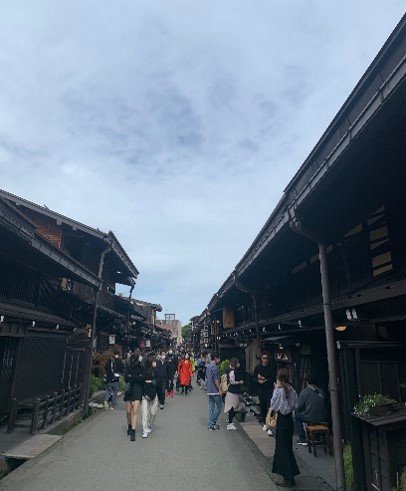 ...
...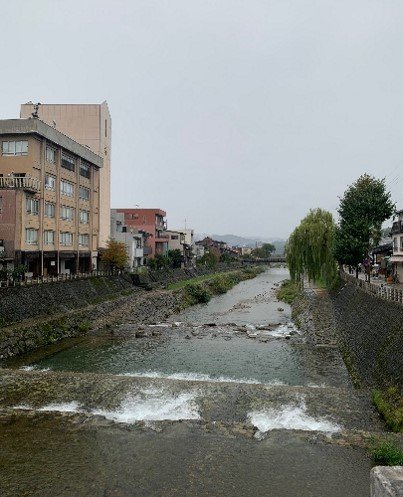 ...
...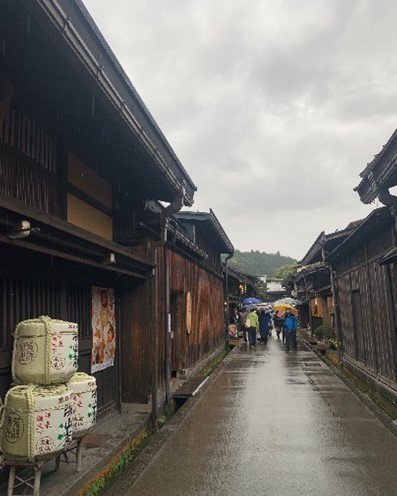
Within the Sanmachi district there are museums and traditional houses you can enter. The two I've been to are the Kusakabe Folk Museum and the Takayama Museum of History and Art. The former is an 1879 construction and was once the house of the Kusakabe family, who were merchants. Here you can not only enjoy the traditional architecture and inner garden, but also traditional local crafts handed down in the family, which are on display. When I went this September, a modern art exhibition with the theme of "digital nature" by Yoichi Ochiai was being displayed. The mixture of this modern art against the traditional 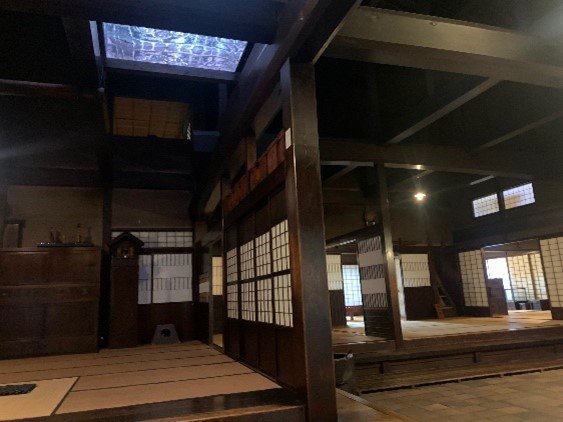 backdrop of the house made for a unique viewing experience. Keep an eye out for other exhibitions or special events, which are periodically held at the museum. The Takayama Museum of History and Art is a municipal museum which also displays local craft items, but also items related to Takayama's human history as a community, such as fire-fighting equipment. Other than the museums I've been to, other highlights include the Showa-kan Museum, which has reconstructions of retro 1950s streets, and Yoshijima Heritage House, another traditional house and cultural treasure alongside the adjoining Kusakabe Folk Museum, although what sets it apart is that it is a sake brewery, and has been since it was built in 1908. Takayama is truly a place you can keep going back to, since there are so many interesting places to see!
backdrop of the house made for a unique viewing experience. Keep an eye out for other exhibitions or special events, which are periodically held at the museum. The Takayama Museum of History and Art is a municipal museum which also displays local craft items, but also items related to Takayama's human history as a community, such as fire-fighting equipment. Other than the museums I've been to, other highlights include the Showa-kan Museum, which has reconstructions of retro 1950s streets, and Yoshijima Heritage House, another traditional house and cultural treasure alongside the adjoining Kusakabe Folk Museum, although what sets it apart is that it is a sake brewery, and has been since it was built in 1908. Takayama is truly a place you can keep going back to, since there are so many interesting places to see!
Perhaps the most famous thing about Takayama, other than its beautiful old town, is its festivals, held twice per 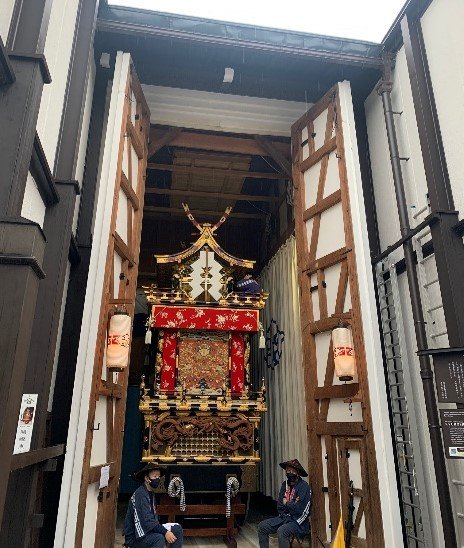 year in autumn (October 9th-10th) and spring (April 14th-15th). They've even been named among the three most beautiful festivals in Japan! Its autumn festival is the aforementioned Hachiman Shrine's annual festival, while the spring festival is of Hie shrine, located further south of the old town area. They both take place in the old town area with floats, or yatai being paraded through the streets, and some of the floats include puppetry. The yatai used at each festival differ, and throughout the year they are kept in storehouses with very tall doors in the old town, which you can see as you walk through it. The wooden doors are kept shut, but a placard outside each one describes the float housed within. I have yet to attend the spring festival, but last autumn I did go to see the festival, although due to rain, the floats were returned to their storehouses! Luckily, you could continue to see the intricate and beautiful floats from the open doors, while they were being protected from the rain. If you go to Takayama at a time when the festivals are not being held, you can go to the Yatai Kaikan to see some of the floats used during the autumn festival. The floats are a few hundred years old, and a shining example of traditional Japanese culture decked out in gold and with delicate designs. Hachiman shrine is right next door to the Yatai Kaikan, so you can take a look at the wooden shrine buildings after enjoying the floats.
year in autumn (October 9th-10th) and spring (April 14th-15th). They've even been named among the three most beautiful festivals in Japan! Its autumn festival is the aforementioned Hachiman Shrine's annual festival, while the spring festival is of Hie shrine, located further south of the old town area. They both take place in the old town area with floats, or yatai being paraded through the streets, and some of the floats include puppetry. The yatai used at each festival differ, and throughout the year they are kept in storehouses with very tall doors in the old town, which you can see as you walk through it. The wooden doors are kept shut, but a placard outside each one describes the float housed within. I have yet to attend the spring festival, but last autumn I did go to see the festival, although due to rain, the floats were returned to their storehouses! Luckily, you could continue to see the intricate and beautiful floats from the open doors, while they were being protected from the rain. If you go to Takayama at a time when the festivals are not being held, you can go to the Yatai Kaikan to see some of the floats used during the autumn festival. The floats are a few hundred years old, and a shining example of traditional Japanese culture decked out in gold and with delicate designs. Hachiman shrine is right next door to the Yatai Kaikan, so you can take a look at the wooden shrine buildings after enjoying the floats.
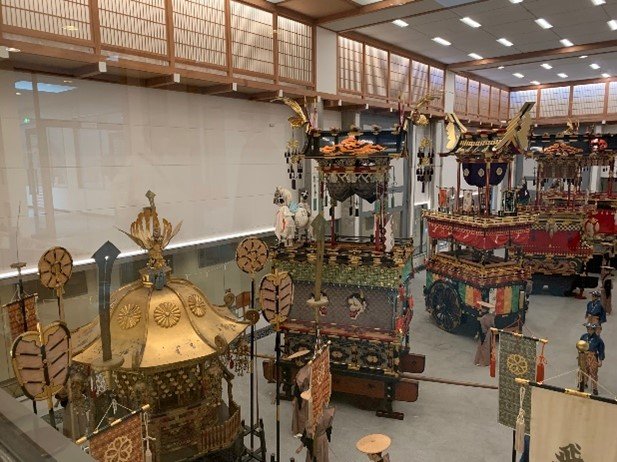 ...
...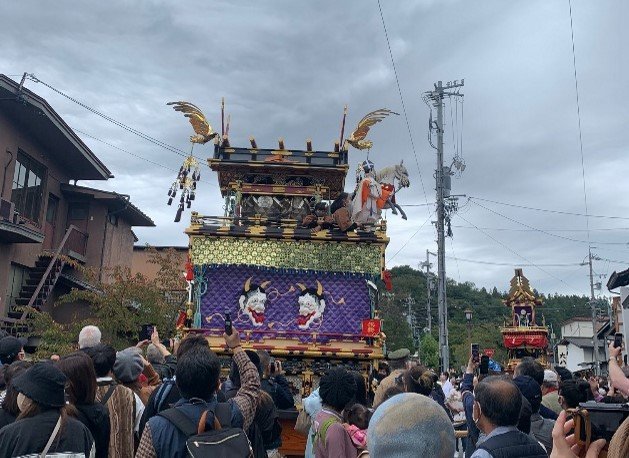
Takayama isn't far from the famous UNESCO World Heritage site Shirakawa-go, which is a village which features the Hida building style gassho-zukuri. This style features a steep triangular thatched roof which resembles two hands coming together in prayer, which is also where this architecture style's name comes from. The bus from Takayama to Shirakawa-go is only about 50 minutes, however if you're pressed for time, you can also stay in Takayama and see this traditional architecture at the Hida Folk Village. Unlike Shirakawa-go, this is not a village where anyone lives; rather it is an open-air museum. It features over 30 houses built during the Edo period and moved from different rural villages around the Hida region, as examples of the traditional ways of life. This includes gassho-zukuri houses, whose steep roofs were designed to withstand the harsh winter conditions in Hida, which brings heavy snow, which could result in the roof collapsing. The steep and durable thatch of gassho-zukuri houses prevents this. Among the houses is an example of where the head of a village lived, and you can also see items local people used in their daily lives, including a collection of sledges for transporting items such as firewood. You can also see some local crafts and observe local artisans making them, for example wood or paper (washi) crafts. A standout at the village is the large pond and water wheel, and you can also feed the koi fish and ducks!
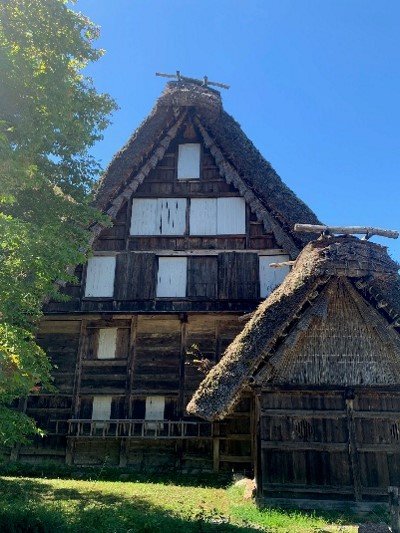 ...
...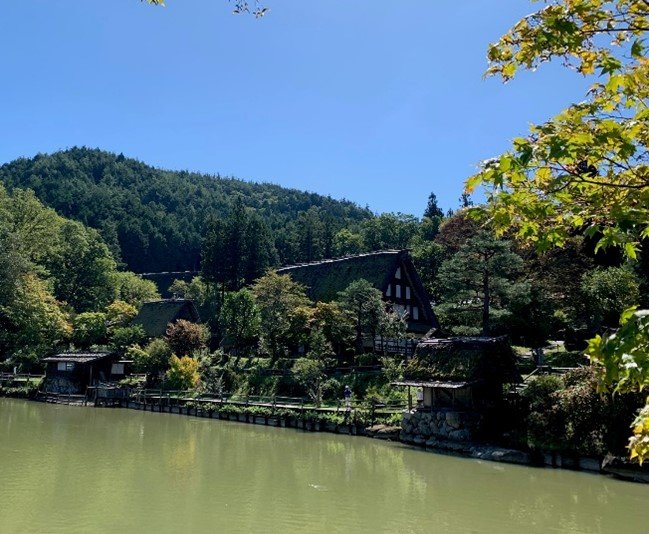
Gifu Prefecture is known for its beautiful nature and clear water streams, and if you travel up to Hida from Nagoya or Gifu city, as I do, the views of both are lovely. In particular, if you take the JR Hida line much of the route passes along the Hida River, and you can observe the clear water and rugged landscape surrounded by mountains covered in dense forest. It takes about 2 hours from Gifu Station to Takayama Station. There are also numerous highway bus options for getting to and from Takayama, including from Osaka, Kyoto, Tokyo and Kanazawa.
....
To conclude, there is no shortage of interesting tourist sites and beautiful scenery in and around Takayama, and every season is lovely. Being a mountainous region, Hida is perhaps most famous for its snowy winter scenes, but the bright new green leaves of spring are equally charming. If you have the chance to, please visit Takayama and stroll through its old streets, enjoying the atmosphere.
...
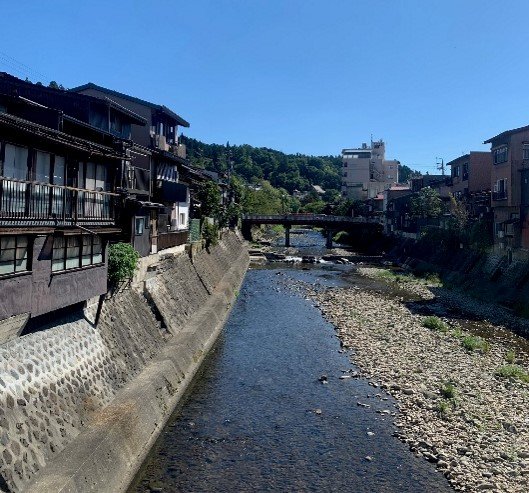
...
...
Photo information:
- Sanmachi old town street.
- Takayama Jinya exterior.
- Mamuki rabbit.
- Two images of Sanmachi old town and one of the Miyagawa.
- Kusakabe Folk Museum interior featuring an Yoichi Ochiai art piece on the ceiling.
- Hachiman Shrine autumn festival floats; including one in its storehouse, one being paraded in the street, and the collection in the Yatai Kaikan.
- Gassho-zukuri houses in the Hida Folk Village.
- Another image of the Miyagawa.
- Below: a sign welcoming visitors at Takayama Station, featuring the mascot Sarubobo.
...
All photos were taken by the author.
...
